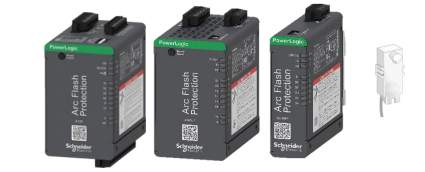
PT. Schneider Indonesia launched the latest arc flash protection relay product, called PowerLogic ARC. Schneider Electric's PowerLogic ARC replaces the previous arc flash protection relay product, namely the Vamp relay, but with the addition of new features.
Schneider Electric's PowerLogic Arc consists of two types, namely A1 and A3. The sensor used is still the same as the Vamp type, namely the VA1DA-x light sensor.
Schneider Electric's PowerLogic A1 (A125) is a stand-alone arc flash protection relay that protects MV switchgear and LV panels/cubicles from possible arc flash interference that cannot be detected by ordinary protection relays. Schneider Electric's PowerLogic A125 is a rebranding of the Vamp 125 product and has the same features, functions, and dimensions as the Vamp 125.
Meanwhile, Schneider Electric's PowerLogic A3 is an Arc Flash protection relay system that can work to provide Arc Flash protection on several panels at once. Schneider Electric's PowerLogic A3 consists of 2 devices, namely A3F as the main relay and A3S using an Arc Extension Module (EM) bus cable.

Figure 1. PowerLogic A1-A3 and Arc Light Sensor
The way the PowerLogic Arc flash protection relay works is:
• Detects an arc flash light using a special light sensor. Or combined with overcurrent pick-up detection from other protection relays.
• When an arc flash is detected, the light sensor sends a signal to the arc relay, and then the arc relay unit will work on the relay contacts to trip the CB.
• Especially for the PowerLogic A3 type, it can be coordinated with breakers from other breakers to become one Arc flash protection system.
• Response time and contact relay High-speed output from the PowerLogic Arc relay is 1-2 milliseconds.
The target of Schneider Electric's PowerLogic A1-A3 product is new LV or MV panels by the Panel Builder (greenfield) or installation of existing panels at the end-user (brownfield).

Figure 2. Example of PowerLogic A1-A3 sensor placement configuration



